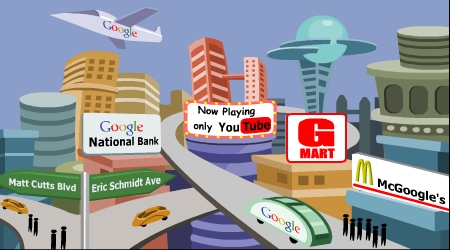Google’s IO 2017 conference was a massive success and brought to the foreground some very exciting information about its future and the services it provides to its users. Google is undoubtedly the ‘go to’ place for internet users, whether it’s to find answers, locations, the weather, or the best restaurants in town, with literally billions of users, it’s pretty much taken over the internet.
From in-car technology to Android TV, to next-gen VR platforms, Google took the world by storm in their conference. We’ve decided to present you with the real future of Google and highlight the services that we think are going to motivate you in 2018 and beyond.

The first on our list is Google Lens, which is essentially a photo app that retrieves and extracts information from the object you’re looking at. So, if you’re chilling out in the local Starbucks at Darling Harbour and want to connect to the Wi-Fi, Google Lens gives you the ability to take a photo of the Wi-Fi information, and log you straight into the network – pretty impressive right?
Have you ever walked through your local park and loved the look and smell of a flower and wondered what it was? With Google Lens, you can take a photo of the flower and it will provide you with the details of what it’s called, with further Google enabled searches to find out more. And if that wasn’t enough, take yourself abroad and use Google Lens to take a photo of a foreign restaurant menu – you guessed it, your phone will translate the text into any language you desire!

As well as this type of technology being extremely exciting for its users, businesses alone can benefit from Google’s services. If your client’s business fits into what Google Lens can offer, they could be receiving more traffic to their website and more customers through the doors. How many times have you walked past a shop-front or restaurant and wanted to share the information with a friend, or arrange a place to meet? This technology will enable users to share any details available about a business, with a simple photo. Presently, this app is only available on Pixel phones, but this is set to change.
In 2017, 20% of mobile searches on Google were made via voice, taking advantage of voice technologies, like Google Home. Google Home is another brilliant example of how its users and businesses can make use of its technology, in order to make their lives easier, or increase customer reach. The IO 2017 conference announced four new features being brought to Google Home, including hands-free voice calling, Bluetooth, Chromecast/Android TV integration, and proactive assistance.

Google Home’s hands-free voice calling pretty much makes your home telephone obsolete; with the technology allowing you to make calls anywhere in your home, you can even connect your mobile phone up to the device so that your own cell number is integrated with it. Alongside, you can use the proactive assistant to plan your day; any meetings that you have scheduled at work can be confirmed with Google Home, as well as possible delays caused by traffic on your route there. Admittedly, some of these features are slightly gimmicky, however, most are actually very valuable and could improve the quality of life for those who are less-abled, live out of town, or lead busy lives.
Businesses are far more accessible than ever before, connecting users via voice with a simple search, within a matter of seconds. We live in a world where we want things, and we want them fast. We don’t want to go around searching for a place to eat, or where we can find the best deals; we want the information handed to us, and for it to be easily accessible in next to no time.
Google has taken their original idea of becoming the best search engine, to a platform that offers so much more for the services of our future. Google’s Cloud Platform has grown exponentially, offering the world something different, from storage to networking, API platforms to management tools, and everything you could ever need to set up your business online. The cloud provides a stable and secure platform, using virtual machines; cloud hosting is very similar in terms of what it can offer compared to shared hosting, without an actual physical server. This benefits businesses as well as users, presenting high speed and consistently high performance, so the fear of any downtime is reduced massively.
Luckily for us, the fun doesn’t stop there. Google and its users have high hopes for the future, continuing to stay on top of, and pushing the boundaries of technology as we know and love it. We can only imagine what Google will present to us next, in their upcoming I/O 2018 in May.









